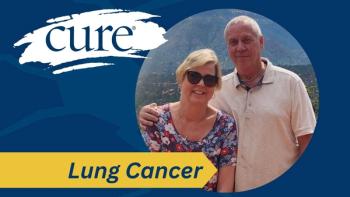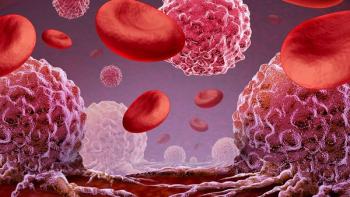
Women Experience Long-Term Neuropathy After Chemotherapy, Leading to Falls
"Women with peripheral neuropathy reported significantly lower physical functioning, significantly more difficulty with tasks of daily living, and nearly twice as many of the women with neuropathy experienced a fall in the last year," says Kerri Winters-Stone.
Nearly half of all women treated with chemotherapy for cancer report symptoms of peripheral neuropathy long after their treatment has ended, and those with the condition have a significantly higher risk of falls, altered walking patterns and other difficulties in physical functioning, a new study has found.
Chemotherapy-induced peripheral neuropathy (CIPN) is damage to nerves that are far from the brain and spinal cord. It can interfere with sensation and movement in the arms, legs, bladder and bowel.
“Women with peripheral neuropathy reported significantly lower physical functioning, significantly more difficulty with tasks of daily living, and nearly twice as many of the women with neuropathy experienced a fall in the last year,” says the study’s lead author, Kerri Winters-Stone.
The study was presented in a presscast held in advance of the 2016 Cancer Survivorship Symposium, a meeting sponsored by the American Society of Clinical Oncology (ASCO), the American Academy of Family Physicians, and the American College of Physicians in San Francisco from January 15-16, 2016.
Winters-Stone, a research professor at Oregon Health and Science University, noted that although CIPN is a common side effect during cancer treatment, fewer data exist on the extent of the condition after treatment or its impact on physical functioning. She attributed this to the fact that studies of CIPN in survivors are infrequent and typically draw on self-reports using small samples.
To address this limitation, researchers designed a study employing not only self-reports from 462 survivors on their physical functioning and number of falls in the past year, but also objective measures of their physical fitness based on such indicators as maximal leg press strength, timed chair stand (the amount of time it takes a woman to rise and sit in a chair five times), a physical performance battery which included assessment of balance and gait patterns as observed on a 4-meter electronic walkway (i.e., speed, number of steps and stride length).
The cohort for this comparative analysis was drawn from survivors enrolled in exercise clinical trials: 210 women reported symptoms of CIPN an average of six years after diagnosis (45 percent), and 252 did not. The average age of the participants was 62 years, and the majority (71 percent) had a diagnosis of breast cancer; the remaining diagnoses were lung, colorectal, ovarian or blood cancers.
Although the two groups were similar on objective measures of leg strength, “in nearly all other objective measures of physical functioning, we saw significant differences between the two,” Winters-Stone explained.
“Women who had peripheral neuropathy took longer to rise five times from a chair, they scored worse on the physical performance battery, their gait speed was slower, they took fewer steps, they had shorter strides and they spent more time in their gait cycle with two feet on the ground.”
In addition, 31 percent of the women with CIPN experienced a fall in the previous year versus 19 percent of those without CIPN. The researchers found that women with CIPN have specific underlying impairments that put them at risk for falls, limitations that may differ from those that occur with old age, for example. CIPN does not cause muscle weakness but, rather, can have a specific effect on movement and gait patterns. In this study, women with CIPN had difficulty rising from a chair, possibly because their brain does not get enough information from their feet about how quickly or forcefully to stand up.
“This study is important because it highlights that the neuropathy our patients are experiencing is not just a bothersome symptom — it’s much more than that,” stressed Merry-Jennifer Markham, ASCO spokesperson and moderator of the press cast.
“Neuropathy from chemotherapy not only impacts our survivors’ physical function for years after treatment has ended, it puts them at much higher risk for falls and the morbidity associated with those falls.”
Based on these findings, study authors suggest that commonly recommended exercise, such as walking, may be safer for women with CIPN when done on a treadmill with handrails instead of outdoors, because their altered gait puts them at increased risk of falling. Machine-based resistance training may also not be as beneficial, because neuropathy does not decrease leg strength. Instead, rehabilitation efforts should focus on improving balance during upright movement and specific gait training.
Winters-Stone added that, although the findings from this analysis are based only on women, men with cancer are as likely to experience CIPN as women. She and her research team are currently developing a portable, smartphone-driven device that patients can use to detect and quantify symptoms of neuropathy, such as gait and balance impairments.
Markham added that while CIPN is a common side effect of chemotherapy drugs used to treat a wide range of cancers, it is both under-reported and under-recognized in practice.
“As both physicians and researchers, we owe it to our cancer survivors to take chemotherapy-induced peripheral neuropathy very seriously,” she says. “Strategies to reduce the likelihood of developing the symptom and to improve rehabilitation for those who get the symptom are sorely needed.”





